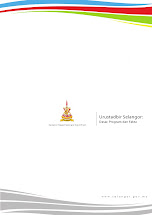Published: Saturday November 9, 2013 MYT 12:00:00 AM
Updated: Saturday November 9, 2013 MYT 9:50:24 PM
BY CHANG KIM LOONG
Banning DIBS is the right move
FOR many years, the National House Buyers Association (HBA) has been urging the Government to take measures to stem the steep rise in property prices to avoid a “homeless generation” as current property prices are far beyond the reach of many low and middle-income families in urban and suburban areas.
This is a ticking time bomb that will result in many social problems if left unchecked.
Real Property Gains Tax (RPGT)
The announcement of the revised rate of tax on gains made in the disposal of properties, namely, the Real Property Gains Tax (RPGT), formerly known as the Anti Speculation Act, under Budget 2014 is far more superior to what had been proposed under Budget 2013 (See table above)
This is because, typically, if the property is purchased directly from the developer, it takes two years (for landed properties) and three years (for strata properties) to be completed.
Hence, under the previous RPGT, speculators could purchase properties from property developers upon their launch and then flip these properties on completion (after two years) and having to pay 10% (i.e. within the 3rd to 5th year).
It is hoped that the revised RPGT rate will deter speculators and, at the same time, not punish genuine house buyers who buy for their own stay or long-term investment. It is worth noting that buyers of residential property could seek a once-in-a-lifetime exemption from the tax.
Budget 2014 is best described as an “excellent mathematical formula” to curb the unbridled escalation of house prices, which has in the last three years skyrocketed. The Government has taken a step in the right direction with measures to slow down the steep rise in property prices due to false demand caused by excessive speculation fuelled by easy housing loans and the previously low RPGT.
Foreign purchasers to pay more
HBA applauds the move to increase the minimum price of property that can be purchased by foreigners from RM500,000 to RM1mil. Foreigners must be prevented from “snapping up” property meant for the lower and middle income.
This artificially inflates prices and creates a domino effect which can result in higher property prices across the industry. This is especially true for development corridors such as Iskandar Malaysia which has seen foreign purchasers arriving in droves and scooping up properties with their advantageous exchange rate.
Banning the Developer Interest-Bearing Scheme (DIBS)
DIBS is popular with speculators as they pay nothing to make a profit. Their initial down-payments and deposits are sometimes factored into the purchase price by the collusive developers, and some unethical financial institutions do not even require that the developer collect the deposit that has to be paid by the so-called purchaser.
This is one of the factors which induces “bogus” house buyers (which I have written about in this column on Aug 31 entitled: Of Speculators and bogus house buyers) who merely flip the property at the right time.
Kudos to Bank Negara for heeding our call and banning DIBS. It may be worth noting that Singapore banned DIBS in 2009.
Considering the deep pockets of property speculators, the effectiveness of these measures remain to be seen. However, they are expected to make speculation unworthwhile. HBA praises the Prime Minister for putting a stop to DIBS, which is one of the reasons attributed to the steep increase in property prices for three reasons:
1. DIBS encourages speculation as the house buyer does not need to “service” any interest/instalment during the construction stage. This will “lure” and tempt many house buyers to speculate and buy into DIBS projects hoping to flip on completion and make a quick profit with little or no capital upfront. Connivingly, the interest element is “serviced” by the participating developers.
2. DIBS artificially inflates prices as all interests borne by the developer are ultimately imputed into the property price. This in turn creates a domino effect which pulls up property prices in surrounding locations.
3. Bank and financial institution staff conniving with developers using the DIBS model should be investigated on their “modus operandi” in financing those artificially inflated prices (DIBS + sales price) and ignoring guidelines on prudent lending.
Banks and financial institutions are to be prudent and only provide mortgage financing up to the fair value/market value of the property. In this respect, a benchmark of fair value or market value is the current properties available. Somehow, properties sold under DIBS are always priced much higher; 15% to 20% higher compared with those without DIBS.
For standard condominiums costing RM500,000 without DIBS, should the developer market such properties under DIBS, the selling price could be as high as RM650,000. This creates a potential property bubble should the developer default in “servicing” the interest and the borrower/purchaser also defaults. The bank would only be able to recover up to RM500,000 if the said property is auctioned at market value.
In the event of an economic downturn, banks saddled with too much DIBS end-financing could collapse as the losses from such DIBS end-financing will erode the banks’ capital.
The collapse of just one bank/financial institution could cause a systemic collapse of the entire financial industry.
Bank Negara should take action against such bank and financial institution staff who have provided both project financing and end-financing to DIBS projects under the newly-minted Financial Services Act, 2013.
With the RPGT increase, banning of the DIBS and the Government’s aspiration to supply more ‘ownership housing schemes’ at affordable pricing, it is hoped that speculative demand for properties will stabilise to a more realistic level. I have heard that many businessmen do not do business anymore but indulge in property speculation as a livelihood and for income.
It is akin to the stock market dealings that were rampant during a ‘bull run’. Certain things have to be stopped before they become worse like the sub-prime crisis in the US.
If readers were to take a drive around completed projects, they will find signboards advertising units for sale upon the delivery of keys. If the purchaser is purchasing for his own occupation, why is there this need to put up these signboards or appoint estate agents to dispose of the units? It goes to show that some purchasers are merely speculators (not investors) from day one and the banks and financial institutions choose to “close one eye” despite knowing this.
Have the banks ever gone to the ground to check whether the units purchased and financed are actually “owner occupied”? If the property is “owner occupied”, the risk rating is lower and thus, he enjoys a lower interest rate. But if it is non-owner occupied, it should have higher interest rates. Borrowers of “owner occupied” properties are normally required to make a declaration to that effect to enjoy a lower interest rate.
But does the bank participate in this booking of credit risk?
If the property is non-owner occupied, the lending will fall under ‘real estate classification’ and not ‘housing’.
So, there may even be misreporting to Bank Negara and subsequent national statistics.
This column continues next week.
> CHANG KIM LOONG is the honorary secretary-general of the National House Buyers Association (www.hba.org.my), a non-profit, non-governmental organisation (NGO) manned by volunteers. He is also an NGO Councillor at the Subang Jaya Municipality Council.










